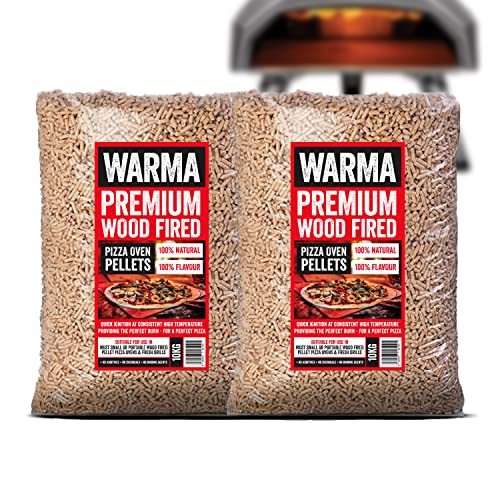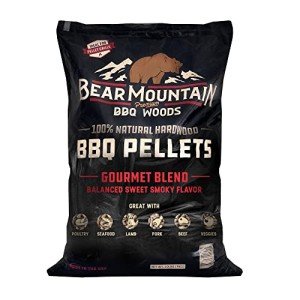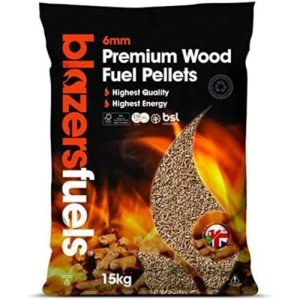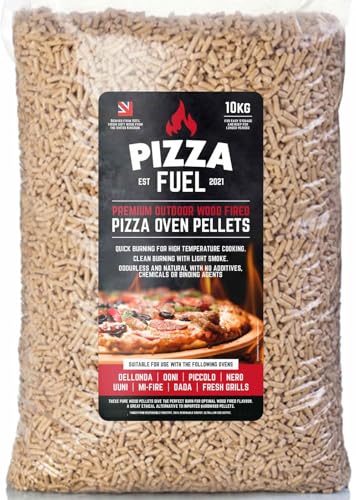In the world of gourmet cooking, few dishes rival the delight of a perfectly baked pizza. The secret to achieving that ideal crust lies not just in the dough or sauce, but also in the cooking method. As pizza lovers have shifted from traditional ovens to premium pizza ovens, the choice of fuel has become paramount. One of the best options available today is wood pellets. This guide dives into the benefits of using premium pizza oven wood pellets as a natural fuel, the different types available, and some frequently asked questions.
Understanding Wood Pellets
Wood pellets are small cylindrical pieces of compressed wood that serve as a fantastic source of heat for various cooking applications. They are made from sawdust and wood shavings, which are compacted under high pressure to form pellets. These pellets ignite easily, burn cleanly, and impart a unique flavor to the food being cooked.
Benefits of Using Wood Pellets in Pizza Ovens
The use of wood pellets as fuel for pizza ovens offers several advantages over traditional fuels such as propane or charcoal. Here are some key benefits:
-
Flavor Enhancement: Wood pellets provide a distinctive smoky flavor that enriches the taste of the pizza. Different types of wood pellets, such as hickory, cherry, or mesquite, impart different flavors, allowing chefs to customize their pizzas.
-
Consistency in Temperature: Wood pellets burn uniformly, allowing for better control over cooking temperatures. This consistency is essential for achieving that perfect crust while ensuring that toppings are thoroughly cooked.
-
Ease of Use: Premium wood pellets are designed for easy usage. They ignite quickly and require minimal maintenance, making the cooking process hassle-free.
-
Environmentally Friendly: Since wood pellets are made from waste materials like sawdust, they are considered a sustainable fuel source. They are carbon-neutral because the CO2 released during combustion is roughly equivalent to what the trees absorbed during their growth.
-
Convenience: Many pizza ovens specifically designed for wood pellets come with features that make cooking easier, like automatic ignition and adjustable temperature controls.
Types of Wood Pellets for Pizza Ovens
Different wood pellets can significantly influence the cooking process and the flavor of the pizza. Here's a breakdown of some popular types of wood pellets used in pizza ovens:
| Wood Type | Flavor Profile | Best For Cooking |
|---|---|---|
| Hickory | Strong, smoky | Meats and savory toppings |
| Apple | Sweet, mild | Chicken and vegetarian options |
| Cherry | Fruity, mild | Pork and seafood |
| Mesquite | Intense, earthy | Bold-flavored meats |
| Maple | Sweet, subtle | All-around flavors |
Sourcing Quality Wood Pellets
When it comes to sourcing wood pellets, quality matters. Here are some tips to ensure you're purchasing premium-grade pellets:
- Look for Food-Grade Certification: Ensure that the pellets are labeled as food-grade, which guarantees they are free from harmful additives or chemicals.
- Check Composition: Pellets made from 100% hardwood are ideal, as they burn hotter and more cleanly than those mixed with softwoods or other fillers.
- Read Reviews: Customer reviews and ratings can provide insight into the performance of specific brands, helping you make an informed decision.
FAQs About Premium Pizza Oven Wood Pellets
1. How do I choose the right wood pellets for my pizza oven?
Choosing the right wood pellets depends on the flavor profile you desire and the type of food you are planning to cook. For example, hickory is great for savory dishes, while fruitwoods like apple or cherry add sweetness.
2. Are wood pellets better than propane for cooking pizza?
Many chefs prefer wood pellets for the unique flavor they impart and the control they offer over cooking temperatures. However, propane can be more convenient and quicker to heat up. It ultimately depends on personal preference.
3. How do I store wood pellets?
Wood pellets should be stored in a cool, dry place to prevent moisture absorption, which can affect their burning efficiency. It’s advisable to keep them in a sealed container or bag to maintain their quality.
4. How long do wood pellets typically last in a pizza oven?
The burn time of wood pellets can vary based on the type of oven and the temperature settings. Generally, a pellet hopper can hold enough pellets for several hours of cooking, but this also depends on the amount of pizza you plan to cook.
5. Do wood pellets produce a lot of ash?
Premium wood pellets produce minimal ash compared to other fuel sources, making clean-up easier. However, occasional clean-out of the ash tray might still be necessary for optimal operation.
Premium pizza oven wood pellets are becoming a favorite among culinary enthusiasts for good reason. With their natural flavor enhancement, ease of use, and consistent burning characteristics, they create an unparalleled cooking experience. By understanding the various options on the market, as well as their benefits, users can elevate their pizza-making game to new heights. Whether you are a professional chef or a home cooking enthusiast, the right choice of wood pellets can revolutionize your pizza nights. Enjoy experimenting with different flavors and cooking techniques to find your ultimate pizza recipe!






